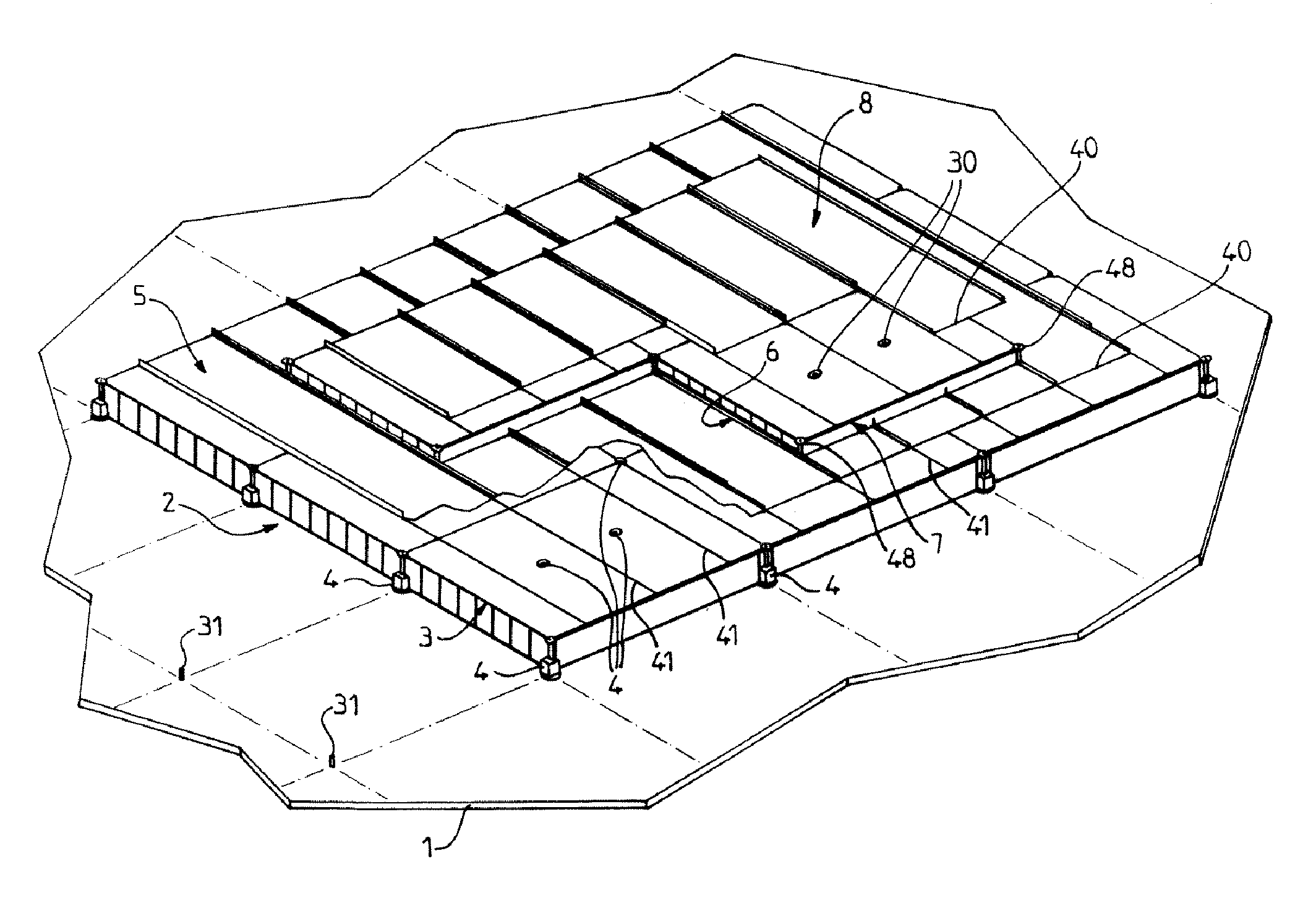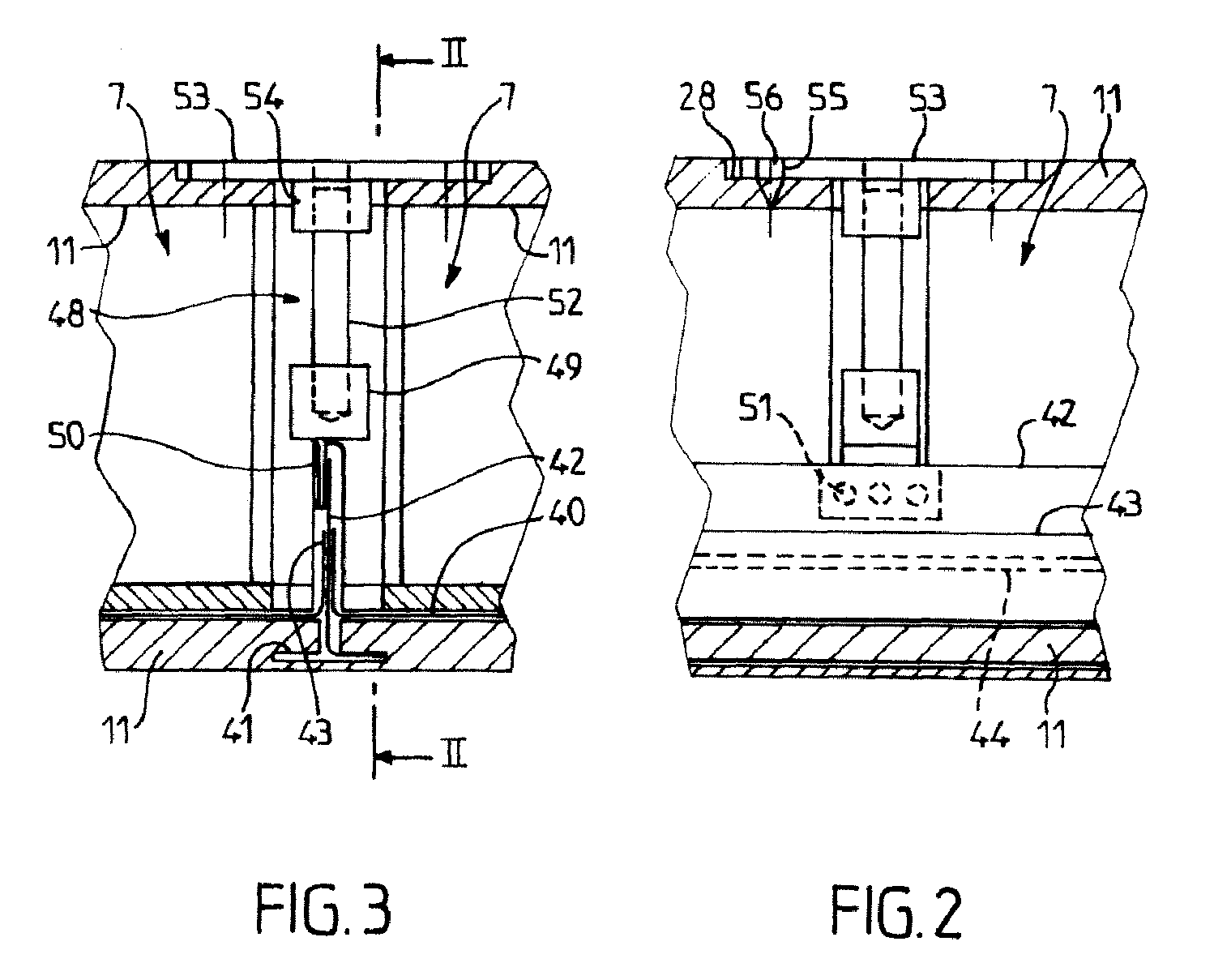Sealed, thermally insulated tank with compression-resistant non-conducting elements
a technology of non-conducting elements and seals, which is applied in the direction of floating buildings, liquid dispensing, hull panellings, etc., can solve the problems of high-quality and therefore expensive plywood, complicated manufacture, and use of perlite powder, etc., and achieves the effect of easy adaptability
- Summary
- Abstract
- Description
- Claims
- Application Information
AI Technical Summary
Benefits of technology
Problems solved by technology
Method used
Image
Examples
Embodiment Construction
[0051]A description will be given below of several embodiments of a sealed, thermally insulated tank incorporated in and anchored to the double hull of a structure of the FPSO or FSRU type or of a methane-type carrier. The general structure of such a tank is well known per se and has a polyhedral form. Therefore, a description will be given only of a wall zone of the tank, it being understood that all the walls of the tank have a similar structure.
[0052]A description is now given of a general embodiment that is useful for understanding the invention, with reference to FIGS. 1 to 3. FIG. 1 shows a zone of the double hull of the ship, denoted by 1. The tank wall is composed, in succession, in its thickness, of a secondary insulating barrier 2 formed from caissons 3 juxtaposed on the double hull 1 and anchored to the latter by means of secondary retention members 4, then a secondary sealing barrier 5 carried by the caissons 3, then a primary insulating barrier 6 formed from juxtaposed ...
PUM
 Login to View More
Login to View More Abstract
Description
Claims
Application Information
 Login to View More
Login to View More - R&D
- Intellectual Property
- Life Sciences
- Materials
- Tech Scout
- Unparalleled Data Quality
- Higher Quality Content
- 60% Fewer Hallucinations
Browse by: Latest US Patents, China's latest patents, Technical Efficacy Thesaurus, Application Domain, Technology Topic, Popular Technical Reports.
© 2025 PatSnap. All rights reserved.Legal|Privacy policy|Modern Slavery Act Transparency Statement|Sitemap|About US| Contact US: help@patsnap.com



